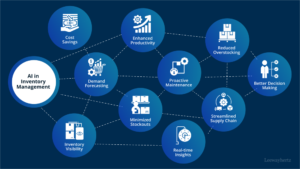Data Center Infrastructure Management tools monitor everything and ease capacity planning and operational support

One of the industry’s newest technologies to address data center capacity planning is the Data Center Infrastructure Management (DCIM) Suite. DCIM Suites enable the monitoring and modeling of everything in the data center for the purpose of capacity planning and operational support.
This vendor-written tech primer has been edited by Network World to eliminate product promotion, but readers should note it will likely favor the submitter’s approach.
Trying to plan a data center that can accommodate needs for 10 years has always been a challenge, with the classic fallback being to just overbuild everything to allow for any conceivable future.
But when the economy tightened, organizations began to re-think this practice and have become extremely conservative in bringing new capital-intensive future capacity online. Each in-progress project is being scrutinized for scope and priority, and existing data center structures are being studied to determine how they can be better utilized immediately.
At the same time, all professional IT organizations are spending a lot of effort to create a set of best practices and implement solutions which assure they understand their business computing needs and can articulate their computing capacity demands over longer periods of time. The goal is to closely align the supply of data center capacity to those needs.
One of the industry’s newest technologies to address this business planning function for data center capacity planning is the Data Center Infrastructure Management (DCIM) Suite. DCIM Suites provide a set of capabilities that enable the monitoring and modeling of everything in the data center for the purpose of capacity planning and operational support. Every device, every connection, where they are placed and how much power they draw.
All of this information is modeled in a single data structure with an extremely high level of fidelity so any combination of devices (or even the data center as a whole) can be studied and actively managed using various planning scenarios. When implemented fully, users of DCIM Suites can manage all business aspects of the data center with a high degree of accuracy without the need to step foot in the data center with a clipboard.
As a data center modeling solution, DCIM Suites also capture the facilities-provided resources, such as power and cooling, to assure the computing needs are coordinated with the physical structure itself. For instance, moving a workload to a server that has plenty of CPU but is in a row that doesn’t have additional power is worthless. CPU cycles and available watts (and cooling) must exist at the same location for dynamic workload management to be possible.
DCIM Suites can lower costs associated with mismatched supply and demand, can improve operational efficiency through more accurate remediation support, and can reduce downtime by quickly understanding the impact of each device and everything else.
DCIM can be deployed in stages, starting with either the facilities monitoring components or the asset lifecycle management components, depending on which organization is driving the project. It is important to remember, however, that in the end, both sides of the DCIM picture will be painted. Regardless of where any forward-thinking organization starts, DCIM Suites will be deployed to manage both the data center structure and the housed equipment.
Many of the industry’s largest commercial data centers have embraced the facilities components of DCIM in a big way and are rushing to deploy it today. The likes of eBay, Facebook and Google all realized early that investing in their IT future starts with an actionable plan for cost-based capacity management.
They also quickly came to the same conclusion: that the means to cost-effectively manage capacity has two major components: managing the structures themselves (including all of the facilities components) and managing the lifecycle of all of the data center’s IT components and their interconnectivity. And each of these major components has a handful of sub-components which can also be effective at managing one or more pieces.
Commercial operators will choose which path to start their pro-active management journey, but they are keenly aware that BOTH of these major components will be implemented over time.
Since DCIM Suites offer so many capabilities, many mega-centers are already deploying DCIM, and some are already realizing highly successful DCIM-enabled results. Many of these mega-centers address their structure related management needs first, with facilities-style commercial or homegrown monitoring and alarming fabrics. Facilities professionals have been modernizing their control logic and data center designs over the last few years and many of the most visible DCIM solutions at these mega-centers can be looked at as the next generation of Facilities Management Systems.
At some point in time, the IT professionals who are chartered to populate those mega-centers with processing capacity will have an entirely different view and list of needs from DCIM Suites. These IT professionals focus on the lifecycle management of their specific IT assets (like servers, switches and storage) over long periods, and solutions which manage operational change will be paramount to their success. DCIM Suites support their need for increased Availability at a cost structure that is in line with the business.
These IT professionals are painfully aware that the data center assets change all the time. A conservative estimate of the amount of change may be 25% of all data center mounted devices per year (based on financing, service and warranty schedules). An IT professional in these mega-centers will be looking for DCIM solutions that view all of these discrete changes as miniature projects, and which understands how to plan and manage dozens or hundreds of these mini projects which overlap over the course of any given year.
They would also likely want to understand the impacts of failures, support service desk trouble ticketing processes, and also look at how virtualization can affect their overall service delivery. Clearly the IT professionals have a different set of needs than their Facilities counterparts.
So while monitoring and alarming is a great place to start as a Facilities professional, it is already being viewed as only a portion of the bigger promise of DCIM across the data center. It’s all about defining a set of DCIM goals and timing, and then prioritizing the adoption of DCIM technologies to meet or exceed those goals. In these mega-center deployments, they have rolled their own DCIM as a means answer their highest priority specific goals.
So how far will these mega-centers go down the DCIM path? Over time, all the way. It just makes good business sense. Facilities and IT organizations in these mega-centers will have their needs met in part by DCIM solutions. It’s about actively managing all those components that contribute to the cost structures associated with the data center. Managing the costs associated with cooling and power. Managing the costs associated with assets and their lifecycles. It’s about all of this and everything in between.
DCIM fundamentally is about adding more interactivity to the physical world that traditional IT runs upon. A great example of a cross-organizational deployment of DCIM is eBay’s much publicized “DSE” (see dse.ebay.com) which is a finely tuned monitoring fabric coupled with the requisite business logic and presentation layers to identify key performance indicators and other metrics that make sense to their various stake-holders.
Everything about the data center is changing. The very foundation of IT has long been assumed to exist in a world of resources that appears infinite in nature. Over building and over provisioning data centers has been the best practice for 25 years, but the economy has changed all that. Adoption of DCIM suite solutions enable a significant level of discipline to be added to the capacity planning and management functions of a data center.
Remember that a CIO’s new role in this new economy is to provide just the right amount of services at the least cost for each particular service, to assure that those services are available at the level required for the business, no more and no less. DCIM suites enable the costs of the data center to be studied and optimized. While many times DCIM initiatives starts with a robust Facilities-style monitoring fabric, full DCIM execution will always at some point in time include the active management of the physical IT components that will ultimately live inside those four walls. The “new” data center is not a loose aggregation of isolated sub-systems, but instead must behave as a single, pro-actively planned and managed entity. The DCIM Suite does this.
Harris is the vice president of marketing and data center strategy at Nlyte Softwarewith more than 30 years experience in product and channel marketing, sales, and corporate strategy. He also shares musings on the industry at DCIMExpert. Nlyte Software is the independent provider of data center infrastructure Management (DCIM) solutions.
Source : https://www.networkworld.com
Stay ahead with ITBusinessNews – Your trusted source for Technology and Business news. Fast & Precise




